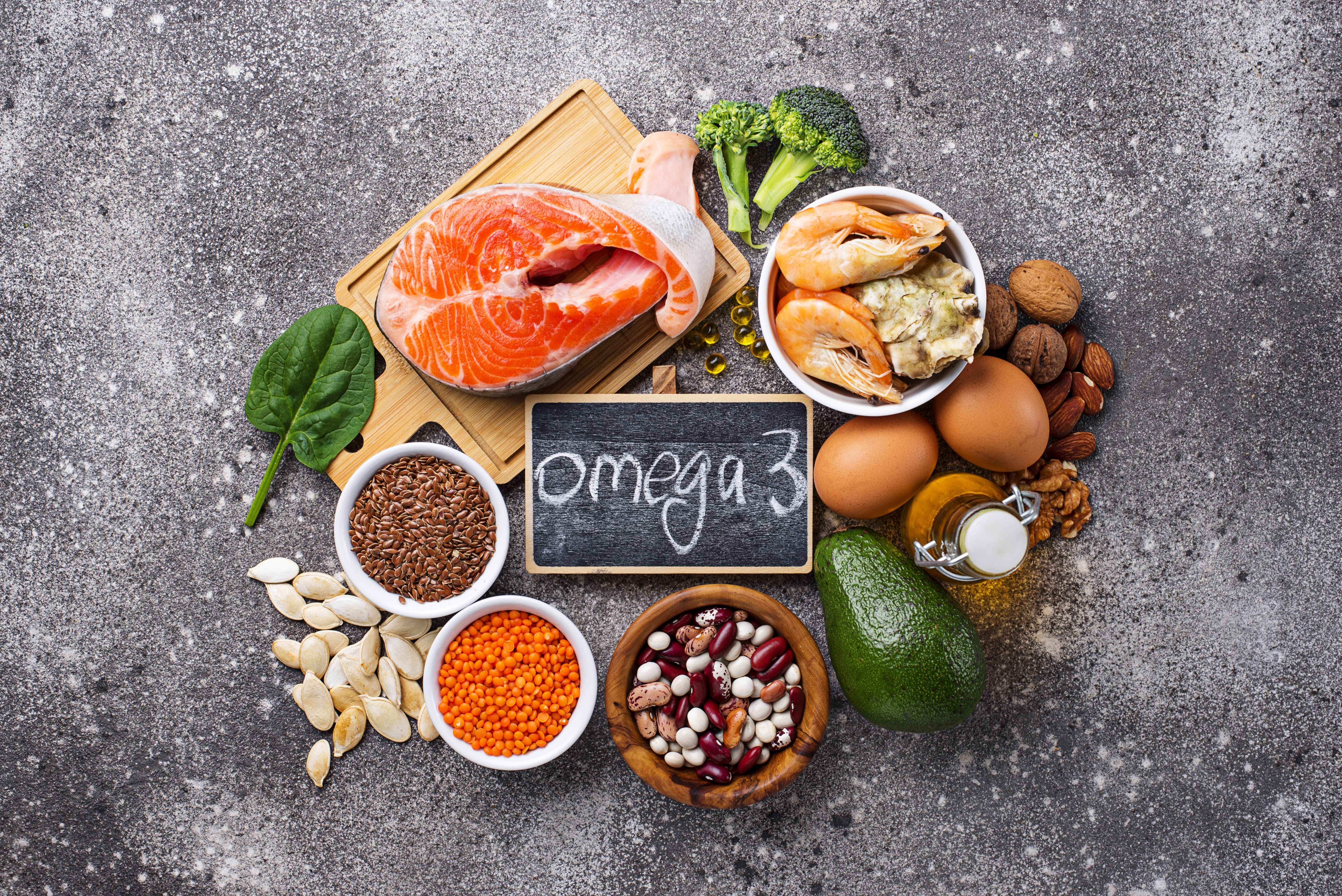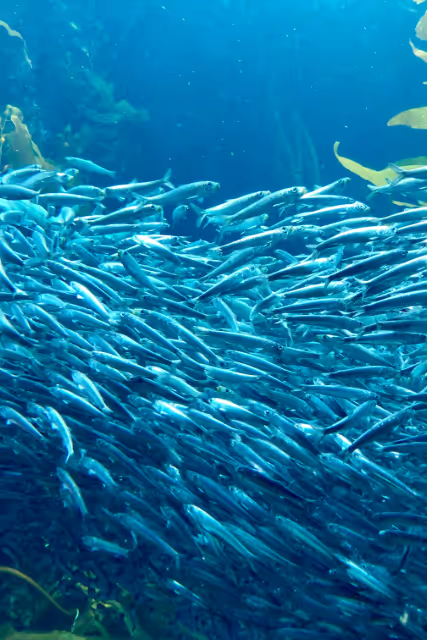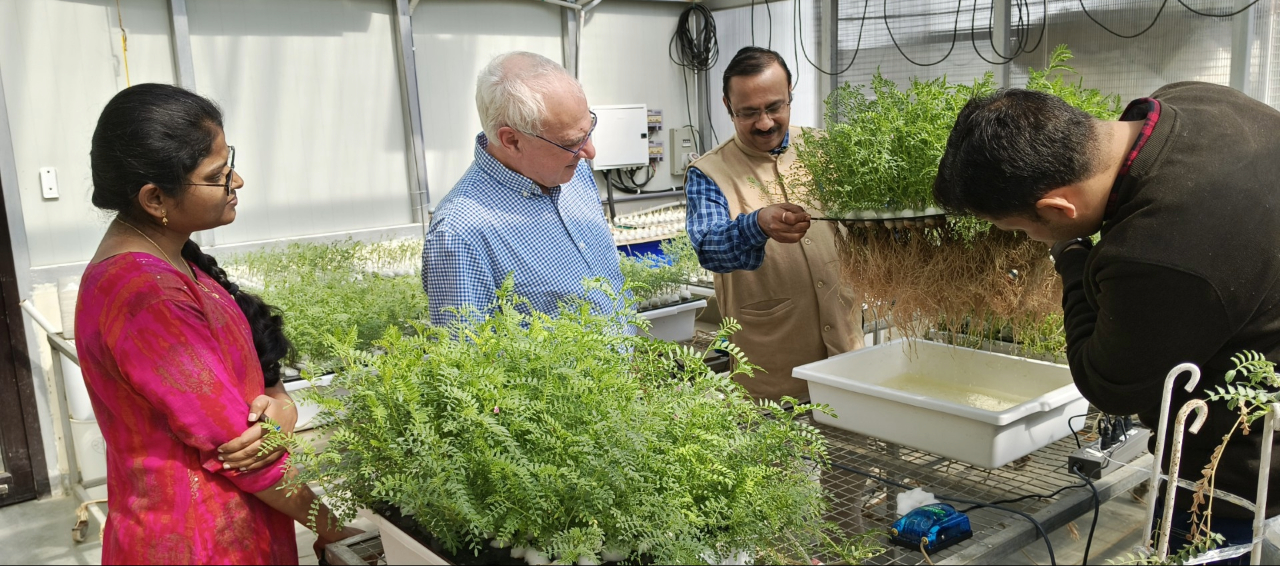A growing demand for nutraceuticals is threatening fish populations and marine food webs






The oceans appear vast and resilient, stretching in endless blue horizons and rich with life. Yet, beneath the surface, a more urgent reality is unfolding. Even as the planet warms and marine ecosystems struggle to keep pace, extraction of resources driven by human demand reaches beyond just seafood–environmental costs of which are slowly, but steadily, rising. The World Bank estimates that nearly 90% of the world’s fish stocks are under stress now, either overfished or close to it.
The global appetite for dietary supplements is rapidly growing. The omega-3 fatty acids market, for one–valued at $2.62 billion in 2023–is projected to reach $4.45 billion by 2030. The demand for omega-3 is projected to increase even more with rising awareness about its health benefits. Consequently, this means that extraction pressures will grow in tandem with demand, as the industry prepares to capitalise on this.
Omega-3 fatty acids are polyunsaturated fats that are extremely important to the human body and health: they help our body grow healthy cell membranes, which further ensures many benefits to our heart, brain, metabolism, and immune system. Research even suggests that omega-3 can help manage cholesterol; they also help lower triglycerides in the body, which are fats that, at high levels, increase the risk of heart disease and stroke. There are three types of omega-3s, of which EPA (eicosapentaenoic acid) and DHA (docosahexaenoic acid) are especially valued. But unlike many other sources of nutrition required to keep the human machine humming, omega-3 is actually not produced inside the body.

And so, they are called "essential fats”: you need to consume them in some form externally, like from your diet or as supplements. Omega-3 are “good fats” that you can get from your diet if you consume oily fish, other seafoods like oysters and shellfish, seaweed, chia seeds, flaxseeds and walnuts; as supplements, omega-3 is available as fish oil, krill oil, algal oil and flaxseed oil pills.
Also read: The promises -- and perils -- of aquaculture
The unseen side of fish oil
Omega-3 fatty acids are typically sourced from fatty or ‘oily’ fish such as mackerel, cod, salmon, herring, tuna, and sardines, as well as walnuts, soybean, and flaxseed. Fish continue to be the primary source for omega-3 supplements due to a higher EPA and DHA content–that is, the omega-3 obtained from fish have these two, long-chain fatty acids that prove to be beneficial to health. Fish oil was the only widely-used source until the 2000s, when microalgae-derived omega-3 was officially approved for use in supplements by the FDA (as a GRAS notification, or what is called ‘Generally Recognised as Safe’).
Omega-3 is sold in bottles across the world, often labelled as “3x strength” or “wild fish oil”. While the labels offer an attractive–and to a certain extent, valid–appeal, they fail to represent the bigger picture of this industry, and the processes involved in holding it up. Fish-based oil has always been a major component of the omega-3 supplement industry, followed by algal oil, krill oil, and other plant-based sources. While fishing pressure, concern over declining fish stocks, and a demand for vegetarian and vegan options may have pushed for non-fish sources, as of 2023, 83.5% of the total revenue brought in by the omega-3 industry still came in from marine sources, like fish and krill, and in small parts, microalgae.
While the labels offer an attractive–and to a certain extent, valid–appeal, they fail to represent the bigger picture of this industry, and the processes involved in holding it up.

However, while fish oil is the most common source of omega-3, it may not be the best. Fish oil can often be contaminated with heavy metals, pesticides, and other toxic compounds, which are usually fat-soluble; the contaminants dissolve and remain in the oils that are later extracted from fish. Anthropogenic activities–that include industrial and agricultural runoff into the ocean–have introduced these harmful pollutants into the marine ecosystem; they are quickly absorbed and assimilated by fish over time.
The Antarctic krill and the threat it faces
In 2008, another source was officially approved for omega-3 fatty acids—the Antarctic krill, which are tiny crustaceans that form the foundation of the Southern Ocean food web. Penguins, whales, seals, and seabirds rely on krill, which are currently being extracted at alarming rates for the fisheries as well as nutraceutical industries.

The Commission for the Conservation of Antarctic Marine Living Resources (CCAMLR), responsible for fisheries management and conservation of the marine ecosystem in the Antarctic, had proposed a management framework. But this framework, which prevented the overharvesting of krill and placed scientifically-backed fishing limits in several areas, expired in 2024, mainly because the CCAMLR could not, in time, finalise a revised management plan before the expiration date. With no consensus on a new framework in sight, catches of Antarctic krill are expected to increase beyond what the ecosystem can sustain, at a rate faster than the krill populations could realistically recover at.
The spawning and reproduction of Antarctic krill are dependent on the climate, seasonal sea ice conditions, and oceanic currents, all of which are now affected by climate change, further impacting their numbers. The Antarctic krill fishery is the largest fishery by weight in the Southern Ocean, and most of the fishery extracts are concentrated in regions where marine animals are known to feed on them–essentially depleting natural feeding grounds.
Also read: The perilous future of Kashmir's once-abundant trout
The complete picture
Interestingly, humans are not the only ones relying on fish and krill. Krill fisheries not only cater to the omega-3 supplement industry, but also aquaculture and unusually, the pet cat and dog food industry. Nutrients extracted from krill, including omega-3 fatty acids, proteins and antioxidants are key constituents of pet food. Similarly, large-scale aquaculture relies heavily on fish feed and oil, extracting large amounts of the natural food from the oceans to channel into aquaculture.
Krill fisheries not only cater to the omega-3 supplement industry, but also aquaculture and unusually, the pet cat and dog food industry.
Some of the fish commonly sought for omega-3 fatty acids—sardines, anchovies, herring, and mackerel—are also ‘forage fish’. These are small to medium sized, highly productive pelagic (open ocean) fish, and along with krill, they form a critical and large resource that most marine animals subsist on in food webs. Krill and forage fish are crucial prey for several other larger fish species; they are considered a ‘keystone species’ for their important role in the food chain. Removing them at industrial scales is not just reducing biomass, it is reshaping entire ecosystems.

Forage fish are attractive for fishers seeking short-term commercial gains due to their aggregating nature which makes them easy to catch. They make up around 30% of the global fish catch, a large proportion of which is now being used in aquaculture. Antarctic krill too, are relatively low-effort catch due to the large aggregations they are found in. In 2024, the Antarctic krill fishery closed early after record catches sparked concerns about overharvest and the impacts on the wildlife that subsists on krill.
Asia-Pacific is projected to be the fastest growing market for omega-3 supplements, with highly populated, fast-growing economies like India and China leading the way. While fisheries are fairly regulated globally, there is limited or poor enforcement in some pockets, which could be a cause for concern in the long term.
All of this extraction is happening against the backdrop of climate change, which is already straining the ecosystem. Overfishing and the resultant loss of biodiversity can make oceans less resilient to the vagaries of climate change. Precautionary approaches, ecosystem-based management, and international cooperation with mutually-agreed caps to keep extraction within sustainable limits might work, but it remains to be seen.
Also read: The intertwined fate of Navi Mumbai's Kolis and the Kasardi river
Could algae be the answer?
Omega-3 is important, and it makes up nearly 25% of the total fatty acids found in the brain’s grey matter. So, if not krill- or fish-derived oil, what is the alternative?
The good news is that alternatives are emerging, and some have existed for a while. Algal oil, derived from marine microalgae, can replace fish- and krill-derived omega-3s, delivering the same EPA and DHA without impacting marine food webs. These microalgae are phytoplankton—tiny, microscopic plants that fish feed on—and the source of fatty acids for fish. Marine algae-based extraction will reduce dependence on fish and krill, offering a more sustainable source for an important supplement. Algal oil has also been found to be cleaner, richer, and devoid of the odour and heavy metal contaminants often found in fish oil.

While marine microalgae-based omega-3 fatty acid supplements are unlikely to replace fish- and krill-derived oil completely, the data does indicate a shifting trend that could restore some balance.
While there are several logistical constraints that prevent industries from scaling up algae production and algal oil extraction, there exist innovative techniques that ensure high-quality extraction without the worrying environmental impact. The algal oil-based omega-3 market is undergoing a shift, and ‘sustainability’, ‘plant-based’, and ‘traceability’ are the buzzwords driving this revolution. Valued currently at $1.6 billion, it is projected to grow to $2.68 billion by 2030, pushed by consumer preference for alternatives.
While marine microalgae-based omega-3 fatty acid supplements are unlikely to replace fish- and krill-derived oil completely, the data does indicate a shifting trend that could restore some balance. Furthermore, emerging research shows that even some macroalgae or seaweeds can offer similar omega-3 benefits, albeit on a smaller scale. Improved innovation, increased consumer awareness, and consumers making informed choices, could well change the dietary supplement landscape in the years to come.
{{quiz}}
Explore other topics
References




.jpg)

.avif)




